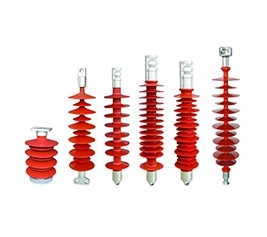en
+
In order to prevent safety accidents caused by internal and external overvoltages of the power system to substations, overvoltage protection devices such as lightning arresters, lightning rods, and grounding grids are usually installed in substations. As one of the important lightning protection devices, the lightning arrester is very common in the protection of substations. Today, Junhe Electronics will share with you the types of arresters used in substations.
Surge arrester is a protective device to limit overvoltage. It can release lightning or overvoltage energy in power system operation, protect electrical equipment from instantaneous overvoltage, and cut off freewheeling to prevent system grounding short circuit.
In the power system, arresters are installed in parallel in the system. When the overvoltage value reaches the specified operating voltage, the arrester will act immediately, and the current will flow to limit the amplitude of the overvoltage to protect the equipment; after the voltage is normal, the arrester will quickly return to its original state to ensure the normal power supply of the system. As a reliable lightning arrester company, we provide surge arresters that effectively limit overvoltage, protecting electrical equipment from instantaneous overvoltage and ensuring uninterrupted power supply in substations and distribution lines.
The tubular arrester is a protective gap with high arc extinguishing ability. When a lightning strike occurs, both the inner and outer gaps are broken down, and the lightning current flows into the ground through the gap. Its structure is relatively complicated, and it is often used on 10kV distribution lines as lightning protection for electrical equipment such as transformers, switches, capacitors, and cable heads. It is suitable for rural or mountainous areas with small power frequency power grid capacity, long lines, low short-circuit current and strong and frequent lightning activities.
Valve-type surge arresters are used in power systems. When an overvoltage occurs in the system and the peak value exceeds the discharge voltage of the gap, the gap is broken down, and the surge current flows into the ground through the valve plate. Due to the non-linear characteristics of the valve plate, the pressure drop (residual pressure) on the valve plate will be limited so that it is lower than the impact withstand pressure of the protected equipment, so that the equipment is protected.
The structure of the valve-type arrester is complex, and it is often used for lightning protection of 3-550kV electrical lines, power transformation and distribution equipment, motors, switches, etc. It is suitable for AC and DC power grids, and is not limited by capacity, line length, and short-circuit current. It can be used in substation and distribution station equipment and lines in industrial systems.
Zinc oxide arresters are widely used in power systems. It is mainly composed of main body components, insulating base, wiring cover and equalizing ring. The main components are stacked and assembled by non-linear metal oxide resistors, sealed in the high-voltage insulation sleeve, without any discharge gap.
Zinc oxide arrester has no discharge delay, because after the external lightning overvoltage action, there is no power frequency continuous flow, it can withstand multiple lightning strikes, low residual voltage, large flow rate, small size, light weight, simple operation and maintenance, commonly used in 0.25-550kV electrical Lightning protection and overvoltage protection for systems and electrical equipment.




